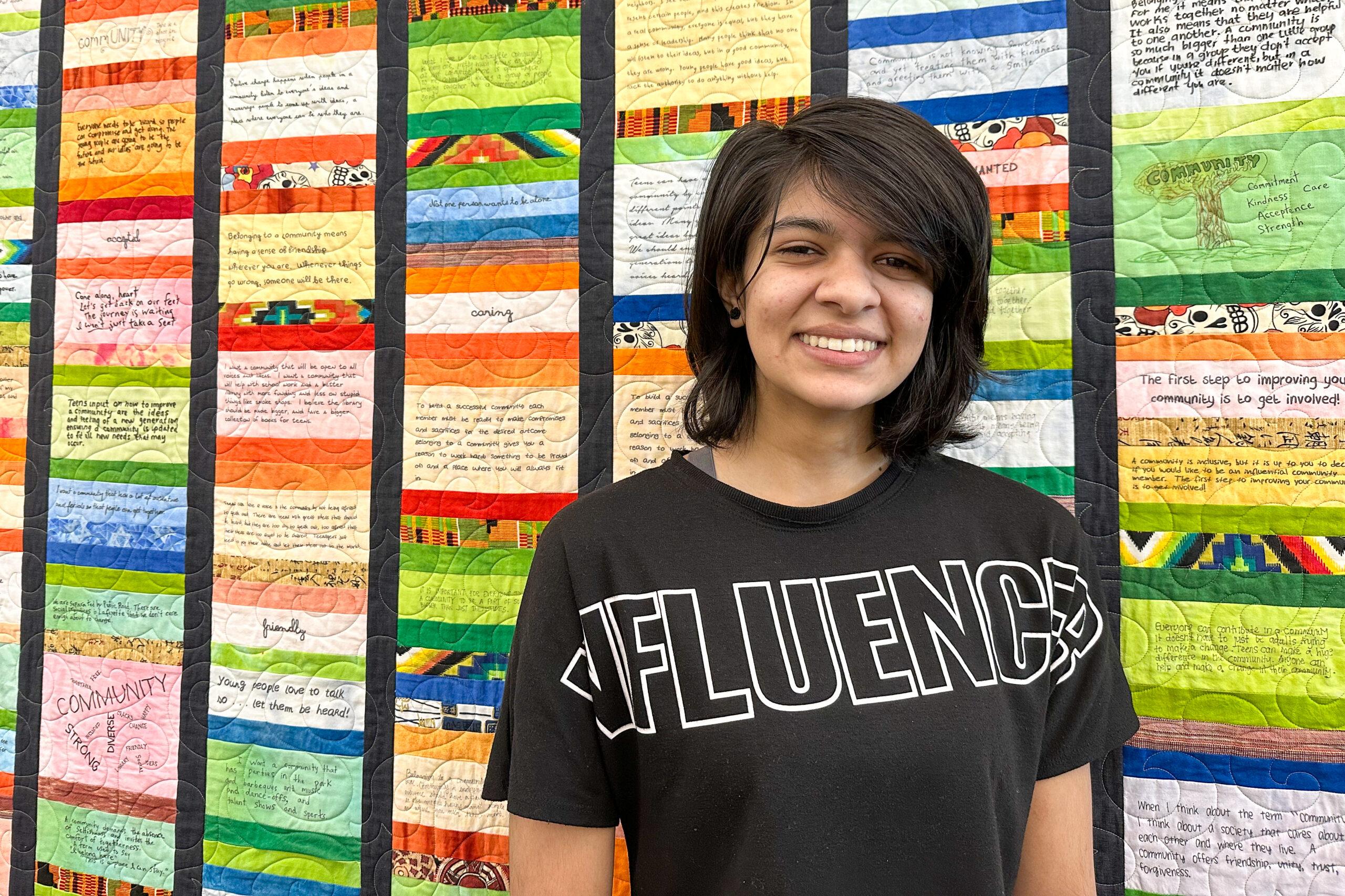
Seventeen-year-old Reema Patadia wants to be a biomedical engineer, but she’s always had a passion for the environment. One day at school, she heard her Design and Innovation teacher talking with a man about an idea that seemed like it could bridge those two interests.
“And I went up to them and said ‘Hey, what are you guys talking about? It sounded really interesting,’”
The man, Martin Ogle, was saying that, typically, students who want an "environmental career” are steered toward just a limited range of fields — environmental scientist, forester, or park ranger. But that’s just a small slice of the economy.
Really, he was saying, that every job now is a climate job – that is, there’s a way anything can be more sustainable, whether you’re a nurse, an engineer, in finance, or run an ice cream shop.
“There’s something that everyone can do if we're going to create a green economy,” said Ogle, a naturalist by training who works on open space projects in Lafayette and conducts workshops for schools and nonprofits and lectures at libraries.
Thinking big when it comes to climate and careers is one way educators can take the concerns teens have about their futures and turn them toward action and solutions.
Ogle, who’s on a mission to spread this approach to classrooms far and wide, believes it’s crucial to go beyond teaching just the science of climate change to instead offer students a more solutions-oriented approach.
“You don't start off with, ‘Oh, look how bad climate change is and we've got to do something about that,’ but instead say ‘How do our kids design the jobs and the economy that they're going to be inheriting based on the best understanding of how human beings fit into this living system?’”
The payoff, advocates say, is young people prepared to take on the challenges the world faces, instead of being overwhelmed by them.
Think of it this way. Human beings are facing the greatest threat to our existence, ever.
Teens know this to their core. But it could be argued that a lot of what they do in schools, well, it can seem as if this grave threat isn’t really there. Ogle came to this conclusion after discussions with hundreds of students.
“Inertia has something to do with it,” he argues. “We are doing things in the same ways we’ve always done them.”
Ogle would like to see two big shifts in schools: 1) principles of sustainability more prominently woven throughout the curriculum, including in math, English, social studies, and science. And 2) make explicit the connections between sustainable practices and all careers so that graduates enter the workforce prepared to put their education into action.
He calls that second point the ALL Careers approach would help students wrap their heads around climate change in an empowering way.
By the time students get to high school, environmental studies is often an elective. In many districts, if they don’t take an earth science class they may end up with very little knowledge about climate concepts.
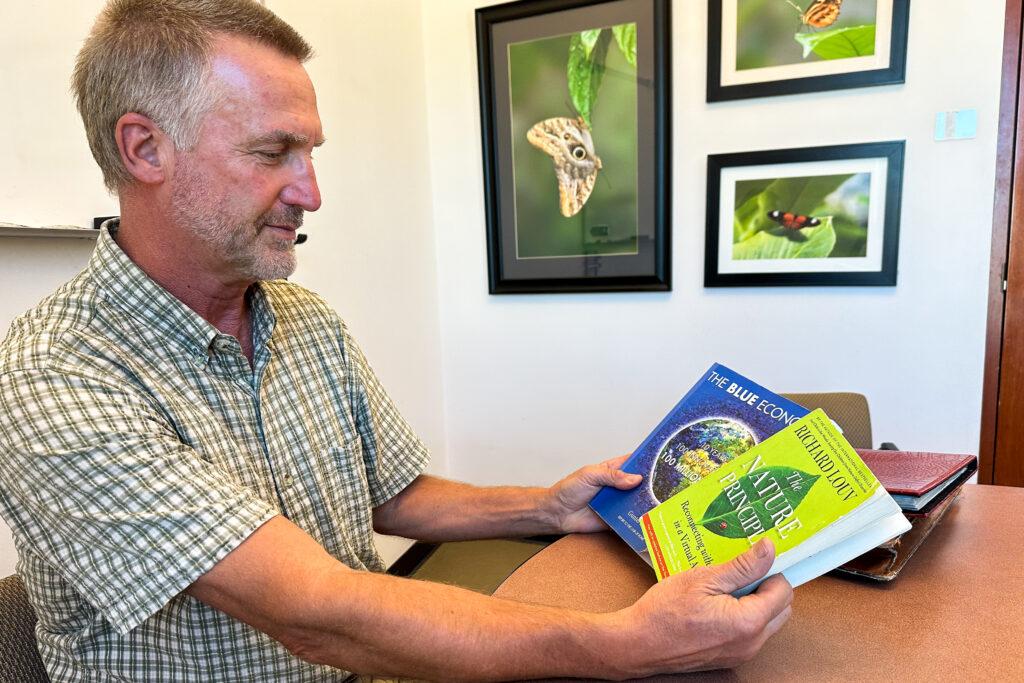
“I don't think it's at the heart of any of the science classes that I've taken,” said senior Macey Austin who lives in Louisville.
Increasingly, students are asking for a new approach to teaching about climate change.
“A lot of the time when we focus on climate change and global climate crises (in school), we look at all of the negatives that we can’t change instead of looking to the future and thinking about how we can adapt as a society so that we can make a better future for ourselves,” said Stella Corzine, 16, a student at Peak to Peak Charter School in Lafayette.
She said Ogle’s approach makes students feel empowered rather than depressed. She helped him write a binder full of case studies about businesses that have been “greened” – like the bread-making company Moxie, the shoe company Crocs, restaurants and fashion corporations that aim for zero waste, a business that uses human urine in fertilizer, and the sustainability efforts of the Vancouver Police Department.
Patadia, who’s a senior at Peak to Peak Charter School, and a partner spent months creating a website that connects any engineering field to concepts of sustainability. She loved the open-ended, interactive project.
“You yourself can explore what it means to have environmental studies align with any sort of career in the world.”
Patadia and Corzine both participated in an environmental contest Ogle hosts each year open to Colorado students.
Teaching for a greener future can look as simple as a classroom full of junk
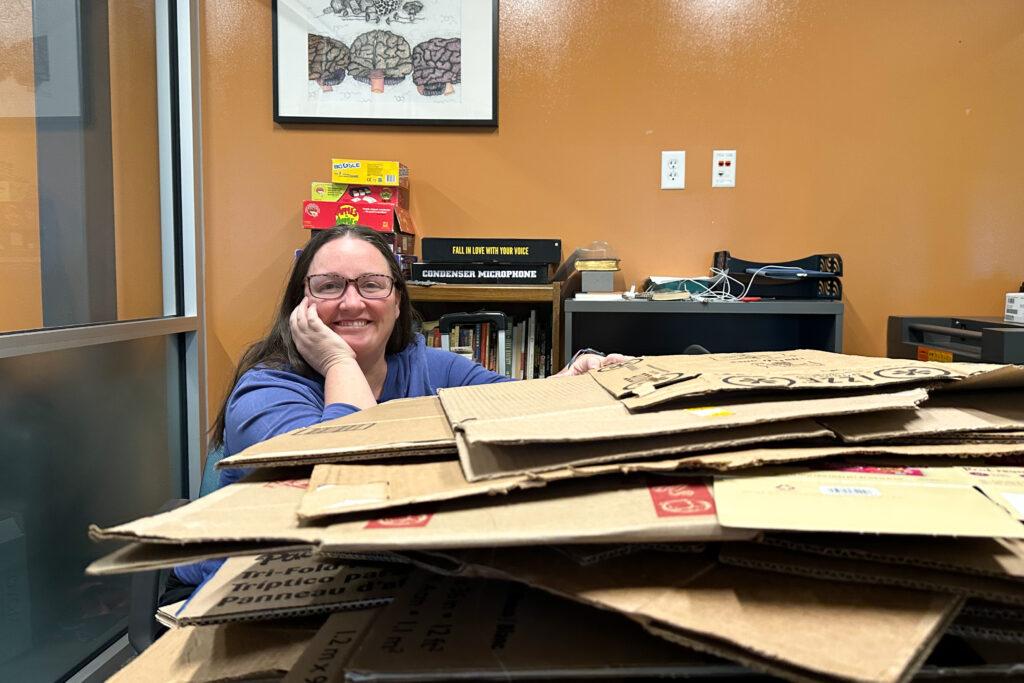
How often teachers take a solutions-oriented approach to teach about sustainability and climate change often depends on the time and interest of individuals.
Kristie Letter’s innovation and design class at Peak to Peak Charter School is filled with all kinds of things others throw away: cardboard, chopsticks from restaurants, old maps, old hangers, glue guns, upholstery samples, a 3D printer, clay – items that her students can upcycle.
She challenged her students to design sustainable products, products that may one day change the world.
One group designed eco-tampons made of biodegradable materials complete with a market, cost, and distribution analysis, while another designed a self-watering pot that uses tea bags filled with nutrients for trees. The kids presented their ideas to experts.
Letter said too often schools’ "environmental" project may be just to tell kids, ‘OK show up here at this place and time - and we’ll pick up trash.’
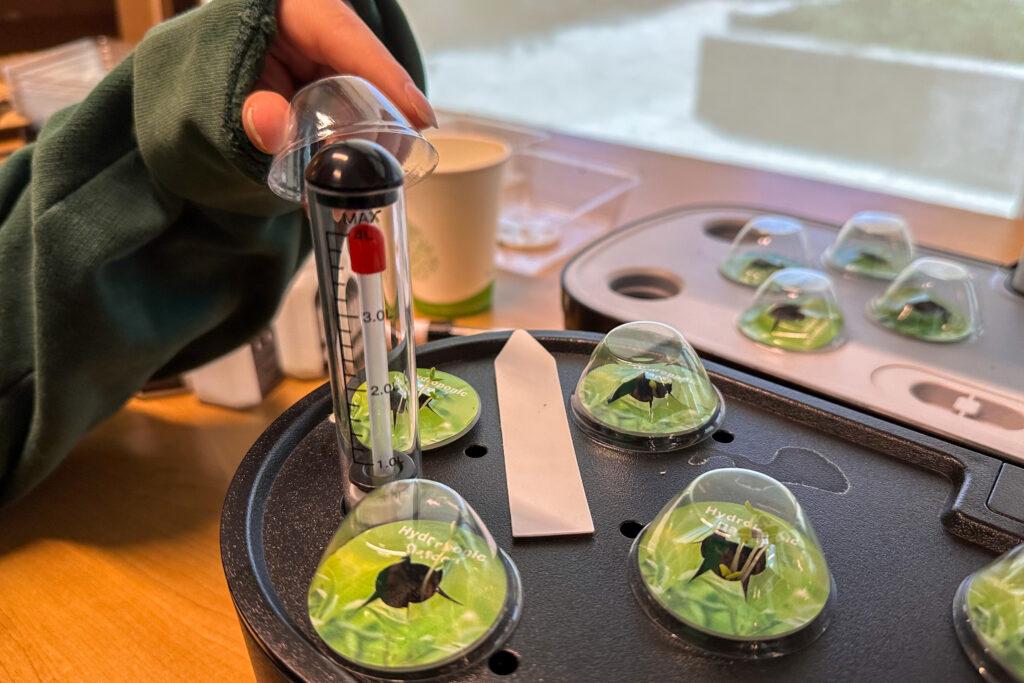
"Schools believe 'That’ll do it, that’ll give them the mental boost we’re looking for.' And I think that’s a vast, vast under-estimation of what service means and what it means for them to be the young environmentalists that they are at heart,” she said. “You have to give them the capacity to be heard, to have a platform, to be changemakers, and to make that change because they will.”
Letter would also like to see these sustainability lessons spread into far more classrooms and subjects like the AP statistics class her husband teaches.
“What statistics can you look at that are about the Earth and our planet and Colorado, specifically the place where we live, the air that we breathe?”
But that’s typically not happening in subjects other than the sciences, and may not even occur there.
Climate change and its impacts are on the minds of many students who attend Monarch High in Louisville, near the Marshall Fire
Senior Macey Austin said Meghan Mosher’s biology class was the one class she’s had that got the closest to addressing climate change and sustainability.
Austin, who has made a film about Martin Ogle’s ALL Careers approach, would like to see more emphasis on career connections to sustainability.
“If you approach it with the sense of, we're doomed, no one's going to want to do anything because they're just sort of sitting back and accepting that we're too far gone,” she said.
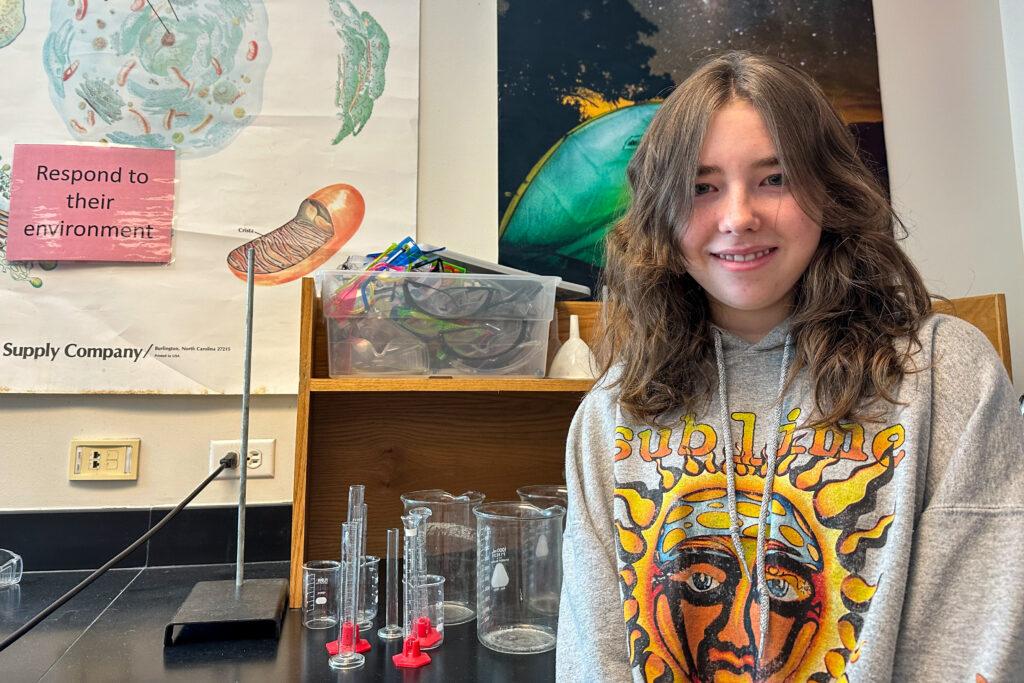
Mosher said the science department at Monarch has had recent discussions on how to make climate change and sustainability standards more explicit in each of the core science classes.
“How can we take that curiosity and inspire them to at least be literate in climate science?”
In 2016, Mosher switched to a version of AP Environmental Science that is more action-oriented, organized around the question, “How can we live more sustainably.” Students calculate the ecological footprints of their households and present a plan to live more sustainably. They also do an environmental impact survey on a local project and create a proposal to make it more sustainable.
“There's some sort of real product they create and it's to create change and it's to make a difference,” she said.
The change in focus appears to yield academic benefits too.
One study shows the proportion of students earning a credit-qualifying score on the AP test was eight percentage points higher in the project-based version of the class than students in the traditional AP class.
But Mosher acknowledges that adopting this new approach — which also requires building partnerships with outside nonprofits — can be hard for many teachers, who are already struggling to keep up with all the demands on their time.
“How can we make sure this is not just something I participate in this year and then it goes away?”
Are Colorado’s academic standards enough?
A study last year by the North American Association for Environmental Education found teachers point to a lack of preparation and resources for teaching climate change and want resources that are up to date, focused on students’ futures, and emphasize resilience and solutions.
A big emphasis in the state’s academic standards is problem-solving, critical thinking, and civic engagement, according to the Colorado Department of Education’s Joanna Bruno. She said nothing is preventing teachers from using sustainability concepts to meet those standards in any subject area.
“People should be thinking about those globally and not just in a single content area.”
But Peak to Peak’s Letter said most teachers are overloaded and it’s too much to ask them to do this on their own. She would like to see state education leaders create classroom materials on sustainability that all teachers could use in multiple subject areas.
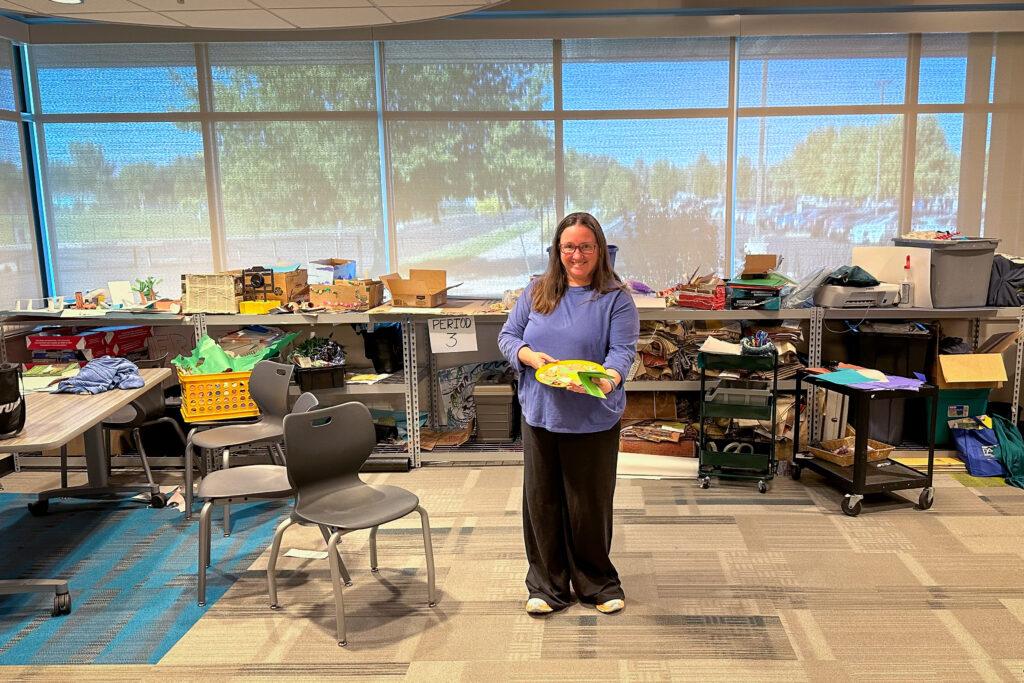
While the curriculum is the purview of local school districts, state lawmakers have mandated that the state create resource banks for certain subjects like media literacy and genocide and Holocaust studies. Bruno said so far there’s been no legislation mandating resources for sustainability or solutions-oriented material on climate change.
There is a Colorado Environmental Education Plan, designed to improve environmental literacy in schools. It has some guidelines and ideas (in the appendices) that teachers could use in the classroom. One of its goals is for students to be able to bring environmental literacy into any career field.
But because the plan doesn’t have dedicated funding to move the strategies forward, many teachers don’t know about it.
“While you can squeeze environmental and outdoor learning in without a lot of funding, to have some sort of systemic effort, funding needs to be part of the conversation,” said Katie Navin, executive director of the Colorado Alliance for Environmental Education.
Navin would also like to see more opportunities and structures to support teachers to partner with nonprofits outside of schools that have expertise in these areas.
Preparing students for the greening of all jobs in the future
The conversation around teaching sustainability and climate solutions isn’t just about incorporating them into academics for their own sake, but also about how schools prepare students for their future careers.
Schools in Colorado are exposing students to more career pathways than they were five years ago. Nearly 40 percent of students were enrolled in at least one career and technical education class as of 2021.
“Green economy readiness could be the next step,” said Ogle.
Colorado already has several “traditional” green pathways in its career and technical education programs. It has an “energy” cluster of pathways that include renewable energy, water quality management, electric vehicle maintenance, and environmental science.
In addition, most of the career clusters offer courses about sustainability in each field, like building trades, manufacturing, agriculture, and culinary programs. Community colleges are rapidly expanding green energy programs in various fields.
The nonprofit Lyra Colorado has a Climatarium project that brings industry, K-12, and higher education together to develop regional pathways to green jobs for students in rural Colorado.
But Ogle would like to ensure that all students, even those who aren’t in a CTE program, are exposed to ideas around sustainability and the rapidly growing green economy.
He emphasizes that there’s a range of levels for how schools can do this, from bringing in a business owner to talk about “greening” her business, to students in an English class writing up case studies on local businesses that have become more sustainable, to math problems calculating the energy generation of local solar panels.
“We need more professional development around how do we tackle these issues and address them in the classroom, and what does this look like?” said Navin.
The “green” or new/modern skills thousands of employers are asking for
The connections Ogle is talking about are getting more attention at the national level too.
Green Teach for Opportunity is an initiative to connect teachers to the skills they need to prepare students for in-demand sustainability jobs.
“Okay, so there's climate change, we get it... but how can we guide our students and how do we teach this and what are the opportunities for them? What are the pathways?” said founder L. Julian Keniry.
In the 1990s, she helped recruit thousands of students nationally who were interested in climate leadership but noticed that all of their engagement was outside the classroom.
“The teachers for various reasons were not really supported, not as included as they could be, which missed a lot of students,” she said. “I saw a gap.”
Decades later, a global team Keniry leads has invested thousands of hours of research into an education program for teachers to help them infuse their curricula with sustainability skills. The program is in beta testing now.
Keniry said the demand for workers with sustainability competencies is already double the supply. Skills include carbon accounting, carbon footprinting tools, strategic planning, project management, community engagement, green finance systems, and many more.
GTO offers teachers a free starter kit that includes an orientation to green or modern skills education, how to infuse in-demand sustainability skills across the curriculum, how to help students think critically about sustainability concepts and performance tools, and how to apply them in work.
Her team is compiling thousands of industry sustainability standards and certifications so teachers can partner with green industry professionals for mentorship, internships, and guidance.
Simply having students choose and critique a sustainability industry standard could be one lesson, Keniry said.
“It doesn't just have to be, ‘You follow the standard to the T.' It can also be, 'Take a look at it, what do you feel is missing? What do you like about it? What would you do differently? How can you engage in this program?’”
The organization’s first conference for teachers is set for February.
“The idea is to think about green skills in broad categories like finance and project management, and to hear from industry leaders and employers on real-world examples and demand from the standpoint of career pathways and actual jobs for their students,” she said.
Students want solutions-oriented climate education now
If you’ve had an honest discussion with any teenager recently, anxiety about climate change looms large.
“I have to say, there are many times when I’ve just been so overwhelmed seeing what is happening in our world,” said Patadia, the future engineer.
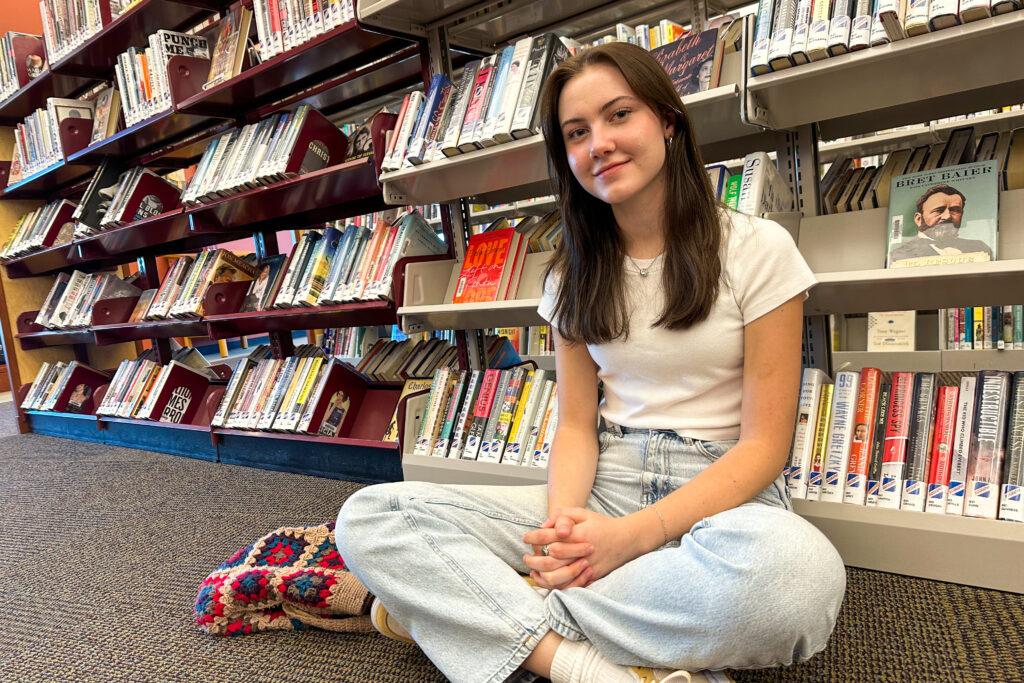
As a child who played outside for hours every day, she remembers oodles of frogs and roly-poly bugs. She no longer sees them. She said she and other youth crave a deeper understanding of sustainability, how their future careers and lives will connect to it, and what they can do about it.
“I don’t necessarily want to go on with my life saying ‘Oh, I didn’t do anything and then suddenly having to regret it in my later-on years. It’s better to try to do what I can right now and try my best to make an impact.”
Her classmate Stella Corzine said that not listening to what youth are asking for is to ignore their futures. She doesn’t want to hear the same old mantra that it’s a problem for the next generation.
“At this point, I think that we’re at that generation. We are that next generation and we’re kind of running out of time.”








